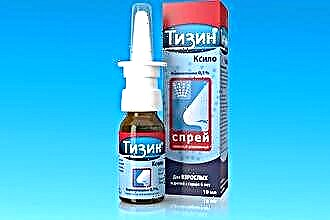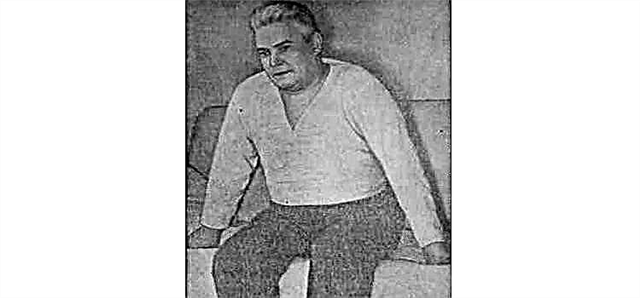Angina refers to an infectious disease, the focus of inflammation of which is concentrated in the tonsils. The disease can be both bacterial and infectious, that is, the causative agents of angina can be both staphylococci and streptococci, and various viral pathogens, as well as fungi. The main symptoms of a sore throat are sore throat, weakness, and enlarged tonsils. In most cases, the course of the disease is accompanied by an increase in body temperature (hyperthermia) to subfebrile or febrile values.
Temperature raising mechanism
Most often, the occurrence of sore throat is provoked by bacteria such as hemolytic streptococcus. The patient complains of a sharp pain in the throat, which is aggravated by swallowing food and saliva, as well as an increased temperature, which often reaches 40.0 ° C.
There are several types of hyperthermia, depending on its values:
- subfebrile, which corresponds to a low temperature of up to 37.8 degrees;
- febrile, the values of which correspond to higher numbers, 38-38.5 degrees;
- pyretic, from 39 to 40 degrees;
- hyperpyretic, body temperature values above 40 degrees.
How long does hyperthermia last with angina? This question worries many who have contracted the infection. After all, low-grade fever can persist even after the symptoms of the disease disappear, which may indicate the addition of a secondary infection.
An increase in body temperature is a consequence of the activation of the adaptive properties of the body, which include:
- the inclusion of a behavioral reaction, accompanied by chills and general malaise;
- a decrease in heat transfer, realized with the help of vasospasm of the skin vessels;
- the action of stress reactions. At this stage, the patient feels symptoms such as fever and weakness.
Important! With the help of an elevated temperature, the body tries to cope with the infection.
It turns out that if the temperature is kept at 38 degrees, the body's work in the fight against infection is aimed at activating special mechanisms that should exclude overheating and disruption of life. However, due to the individual characteristics of the organism or as a result of weakened immunity, these mechanisms often turn out to be ineffective, which provokes the occurrence of overvoltage and a violation of the thermoregulation of the body as a whole. Often, such situations contribute to a stronger reaction, that is, the body temperature can correspond to hyperpyretic values.
Hyperthermia occurs as a result of the appearance in the body of endotoxins - substances that are products of the vital activity of microorganisms that caused disease.
disease.
Important! Endotoxins are a kind of trigger that provokes the process of increasing body temperature.
Endotoxins are involved in the production of a specific prostaglandin, the action of which is aimed at increasing the sensitivity of cold receptors, which provokes the occurrence of disturbances in the thermoregulatory system of the body. It is these violations that are the reason that the body temperature rises to 38.
Temperature for various types of infection
It is known that the body reacts differently to various forms of angina, so it is impossible to determine the exact duration of hyperthermia. In this case, the severity of the disease and the form of infection are decisive.
Important! There are known cases of sore throat without fever.
- The catarrhal form of the disease is characterized by a low-grade fever, up to 38 degrees, which most often lasts no more than two to four days.
- If you are faced with lacunar angina, then in this case you can expect higher values, from 38 to 39 degrees, which persist for three to five days.
- A similar situation is with follicular sore throat, flowing with a high body temperature, which lasts from four to six days. Improper treatment of follicular sore throat can cause complications, which often develop into a gangrenous form of the disease.
- Gangrenous sore throat is dangerous with high intoxication and hyperthermia, which often reaches critical values of 40-41 degrees.
Important! On average, the temperature with angina can persist from four to five days.
With timely treatment and proper antibiotic therapy, a patient with angina is prescribed a disability certificate for an average of seven days, including the time required to recover the body after an illness.
An increase in temperature after elimination of symptoms of sore throat
It often happens that after a seemingly complete recovery, the body temperature rises again to subfebrile values (about 37 ° C) and remains at this level. Why it happens?
A temperature rise of several degrees above normal may indicate
- incomplete recovery;
- the occurrence of complications;
- weakening of immunity;
- as a result of the action of drugs.
Subfebrile temperature values after a sore throat can persist for one to two weeks. If the normalization of the condition does not occur within a given period of time, there is a risk of the formation of chronic tonsillitis. Also, quite often, the patient may develop purulent plugs, the appearance of which provokes the inflammatory process and, as a result, the occurrence of hyperthermia. In such cases, you must immediately visit a doctor who will do the necessary procedure for washing the tonsils. Also, in case of complications, it is necessary to carry out additional procedures aimed at reducing symptoms. It will be useful in this case to rinse the oral cavity with infusions of various medicinal herbs, as well as antiseptics.
Prevention of complications
In order for the healing process to be accompanied by the normalization of body temperature, it is necessary to minimize the likelihood of complications after a sore throat.
Provided that the treatment was carried out correctly, the disease will go away quickly and without complications. Otherwise, unpleasant consequences may arise. So, quite often in those who have had a sore throat, the condition of the internal organs and joints may worsen. Also, among the widespread complications, paratonsillar abscess is distinguished, after the development of which pyretic hyperthermia occurs.
quickly and without complications. Otherwise, unpleasant consequences may arise. So, quite often in those who have had a sore throat, the condition of the internal organs and joints may worsen. Also, among the widespread complications, paratonsillar abscess is distinguished, after the development of which pyretic hyperthermia occurs.
In order to avoid this kind of complication, after the disappearance of the main symptoms of angina, it is necessary to pass special tests to determine the level of antistreptolysin. Also, after a previous illness, you should check
- heart condition by making an electrocardiogram;
- condition of the kidneys using ultrasound.
Important! If, after a sore throat, the body temperature rises again, you should definitely take a general blood and urine test.
Features of the child's body
If a sore throat is more than a child, then the symptoms in this case are identical with the symptoms of sore throat accompanying the disease in an adult. Most often, children experience hyperthermia, which stays at the level of 37-39 degrees. The acute period lasts for two days, after which subfebrile temperature values persist for another four to five days.
Sometimes sore throat can proceed without fever. This is possible with immunodeficiency states accompanied by leukopenia.
If, after the disappearance of the disease, hyperthermia persists for another four or more days, in this case, in order to prevent complications, you must immediately consult a doctor.
Important! If angina and hyperthermia (even at 37 ° C) do not go away, or, on the contrary, the disease goes away without fever, you should immediately consult a doctor.
Also, immediate treatment to specialists requires a condition in which the temperature
- after three days of treatment, it does not normalize, or moreover, it continues to increase;
- keeps (about 37оС) after the seventh day of illness;
- returns again after a short improvement in the state of the large;
- does not fall below 39оС when taking antipyretic drugs;
- accompanied by indigestion, vomiting, febrile convulsions, chills.



